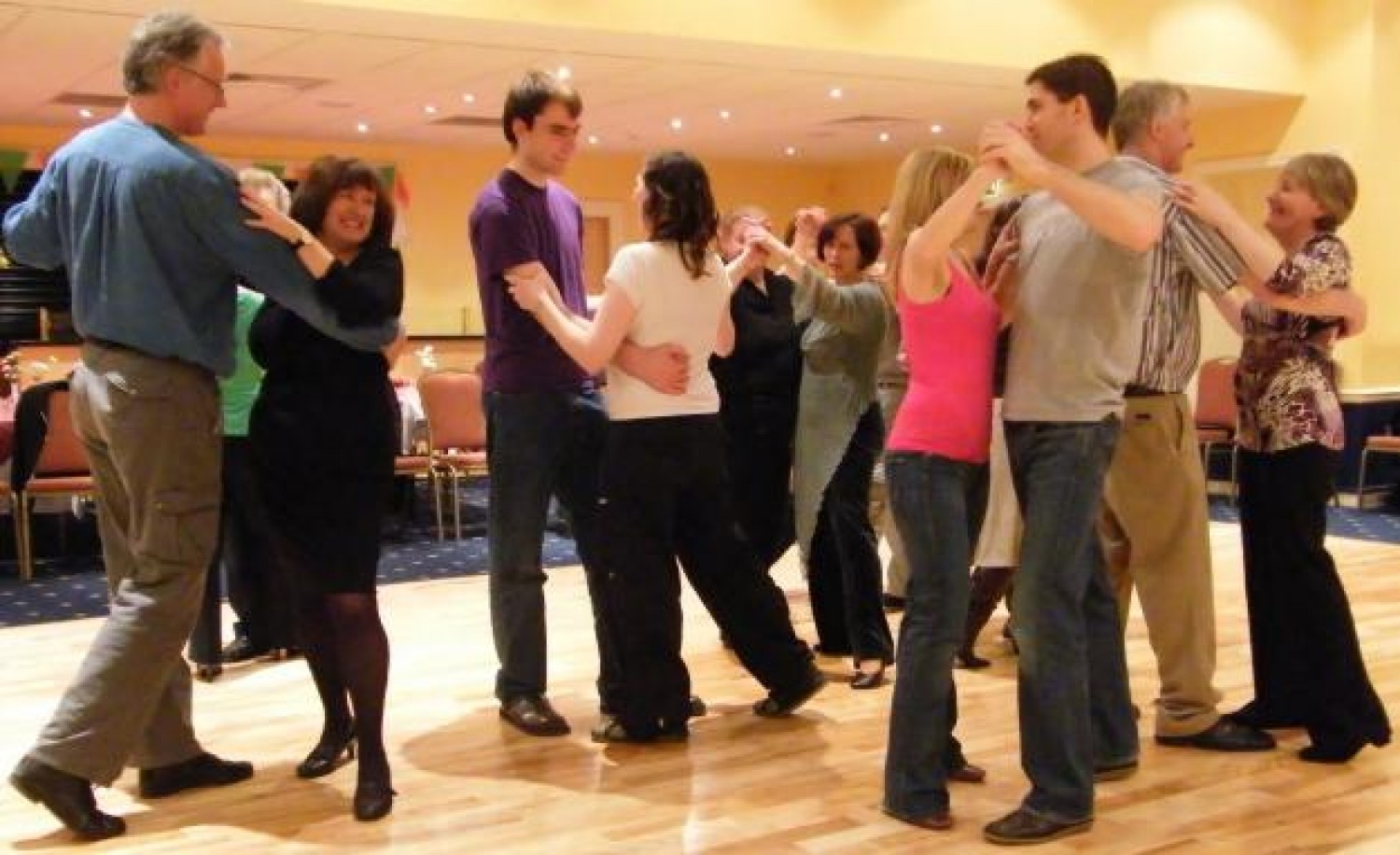Ballroom Turns, and How to do Them Properly, Part 1

Ballroom turns are are both one of the biggest and most challenging parts of every dance – nothing kills the buzz of a flowing dance like clutching your partner frantically because you didn’t prepare for that promenade pivot. Fortunately, we usually only have trouble with part of the turn. Correct that, and you can enjoy both the turn and your partner’s company.
Before you try these exercises, make sure you are comfortable making a complete weight change from one foot to another, stepping forward, backwards, or sideways (lift the other foot to test yourself. After all, if you can’t stay balanced on a single foot, how can you turn on it?
Spot Turns (Turn in place)
One of the easiest ballroom turns, the spot turn is so called because one foot rotates in place, while the other steps around it. Good examples include the salsa underarm turn, or the rumba open break and underarm turn. The hardest part of the turn is the last twist on a single foot before you face the original direction.
How to practice:
- Start with either foot forward without weight.
- Add a small hip twist as your weight changes, rotating yourself 1/4 in the direction of the foot you used (ex. right for a right foot), and lift the back foot to check your balance
- Practice increasing the amount of turn as you build consistency.
Spot Turns (Also known as reverse and natural top)
The second type of spot turn involves rotating in a closed position with your partner around a central point. The challenge here is keeping on the balls of your feet in order to make the little turns on each step. These rotations keep you connected with the turn and your partner.
Here’s a simple chart of the directions leader and follower turn VS how they cross:
| Leader | Follower | |
|---|---|---|
| Turning Left | LF side, RF crosses behind | LF side, RF crosses in front |
| Turning Right | RF side, LF crosses in front | RF side, LF crosses behind |
How to practice:
- Start traveling by alternating side, cross, repeat, in a straight line (plan to turn right first – use the chart for which foot to start).
- Start curving your turn to the right, increasing until you are turning around a single spot on the floor. Work up to a 1/4 turn on every step. Let the ball of your feet turn to face the centre at all times.
- Continue practicing with a stool or other object in the centre for spotting. Keep your body facing the centre.
- Practice in the other direction (refer to the chart).
Pivot Turns
These traveling turns might be danced underarm, as with a salsa CBL w/ inside turn, or connected, as with a promenade pivot. The main challenge is to turn with the free leg extended.
How to practice:
- Starting with either foot, step forward and make a half turn towards the foot you used. Let the free leg stay behind you, tracing a semi-circle as you turn. Pause, and make sure you finished on the same foot you started with.
- Change weight onto the ball of the back foot and make another 1/2 turn in the same direction, letting the front foot trace another semi-circle.
- Repeat, until able to stay balanced stepping forward and backwards, turning in both directions.
Next time, we’ll look at other turns we use in smooth or standard, including chaine turns, reverse and natural turns, and the dreaded heel turn. Until then, happy practicing!


Pingback: Ballroom Turns, and How to do Them Properly, Part 2 | Joy of Dance
April 13, 2018 1:25 amPingback: 3 Steps to Removing the Blocks in Your Dance Technique | Joy of Dance
April 19, 2018 6:27 pm